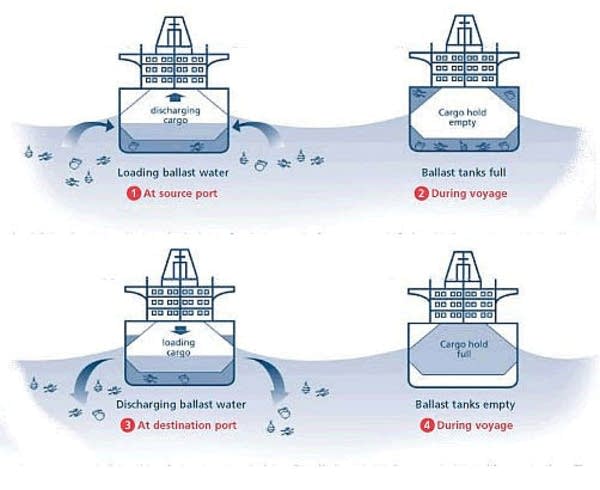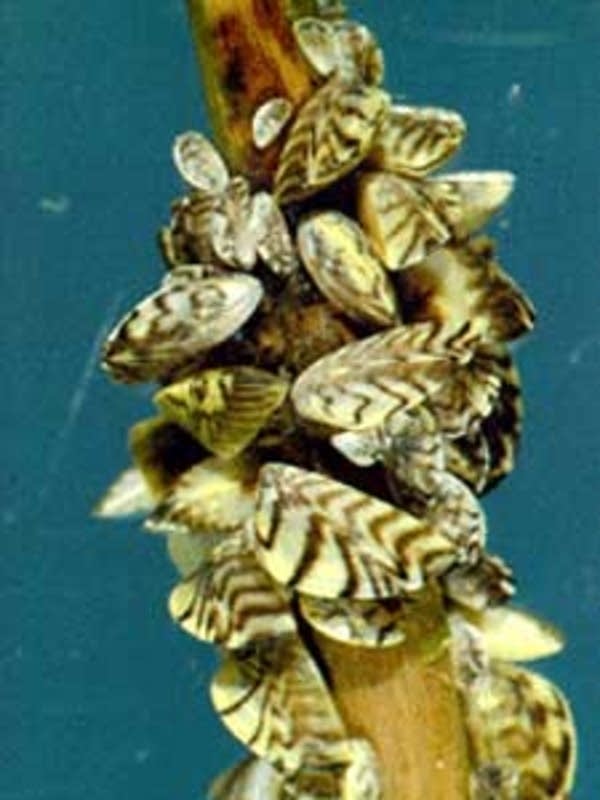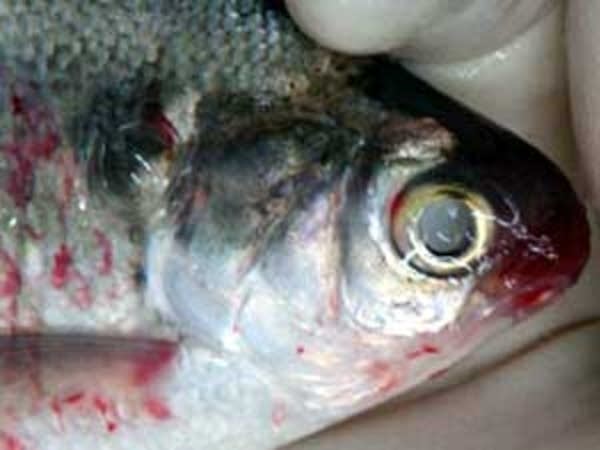EPA plans for stopping Great Lakes invaders debated
Go Deeper.
Create an account or log in to save stories.
Like this?
Thanks for liking this story! We have added it to a list of your favorite stories.

(AP) - As foreign species such as quagga mussels and a killer fish virus continue assaulting the Great Lakes, federal policymakers are taking long-delayed steps to slam the door on other invaders.
But critics say the Environmental Protection Agency's plan does too little to prevent exotics from slipping into the lakes and other U.S. waters aboard ballast tanks of oceangoing cargo ships - their most commonly used passageway.
Environmentalists prefer a bill approved by the U.S. House that would impose tougher requirements on shippers. But it's bottled up in the Senate, with time running short as Congress prepares for its August recess and the fall election campaign. If not enacted this year, the measure dies.

"It's incredibly urgent for the Senate to act on this, or the Great Lakes will end up in a situation that's even more desperate," said Jeff Skelding, national campaign director for the Healing Our Waters-Great Lakes Coalition, which represents more than 100 groups across the region. "Invasives are problem No. 1 for the Great Lakes and they're a big problem in much of the country."
Turn Up Your Support
MPR News helps you turn down the noise and build shared understanding. Turn up your support for this public resource and keep trusted journalism accessible to all.
A federal court has ordered the EPA to develop ballast regulations by Sept. 30. The agency, which has long exempted ballast discharges from anti-pollution requirements, is appealing. But it has proposed a general permit for shippers and is taking public comments this month.
Benjamin Grumbles, EPA's assistant administrator for water, described the proposed permit as "a stopgap approach for regulating ballast and other vessel discharges in the most practical way possible" while Congress debates the matter.
At least 185 invaders are devastating the Great Lakes ecosystem, out-competing native species for food, spreading disease and costing the regional economy billions a year. Scientists believe most were brought to the region in ballast water from central Europe and elsewhere.

Ships fill their ballast tanks to improve stability in rough seas when traveling with little or no cargo. They dump the water - and whatever life forms it carries - after arriving in port to take on freight.
The quagga mussel and its cousin the zebra mussel, both ballast travelers, are gobbling up algae at the base of the aquatic food chain, endangering the region's $4 billion fishery.
Viral hemorrhagic septicemia, which has caused huge fish kills in all the Great Lakes except Lake Superior, likely arrived in ballast water or imported bait.
The EPA permit would require oceangoing freighters to dump ballast water at least 200 miles from shore, then refill the tanks with seawater to kill remaining freshwater creatures.
That isn't a new idea; Congress ordered the same thing in 1990 for saltwater ships en route to the lakes.

But the Coast Guard, which oversees compliance, opened a gaping loophole by exempting ships with full cargo loads - about 90 percent of the "salties" calling at Great Lakes ports. Their ballast tanks are presumably empty, although they often hold residual pools of water and mud teeming with aquatic life.
Under the EPA permit, ships with no ballast on board would have to rinse their tanks with saltwater before entering U.S. territorial waters. Canada imposed the same requirement two years ago.
The St. Lawrence Seaway Development Corp., a U.S. agency, did likewise last February, which administrator Collister Johnson Jr. described as a major step.
But environmentalists say exchanging ballast water at sea or swishing out tanks, while helpful, isn't enough.
"It doesn't kill them all, it doesn't remove them all and the risk still remains," said Jennifer Nalbone, invasive species director for Great Lakes United.

Her group supports a provision in the House bill ordering ships by 2012 to install treatment systems to sterilize ballast water before it's released.
The effectiveness of saltwater flushing depends on what organisms are in the ballast tank, said David Reid, a scientist with the National Oceanic and Atmospheric Administration's Great Lakes Environmental Research Laboratory in Ann Arbor.
Creatures from environments similar to the Great Lakes, which have extremely low salinity, die "pretty quickly" when the tanks are flushed, Reid said. But the mortality rate drops for those native to estuaries, where salt levels are higher.
Another variable is a particular organism's age. In the larval stage, a freshwater mussel would have no chance in saltwater. But an adult could retract into its shell and possibly survive until dumped into a Great Lakes harbor. In one experiment, mussels lasted 48 hours in salt water, Reid said.
Researchers are experimenting with a variety of treatment methods, from chemicals to ultraviolet irradiation to removing oxygen by pumping in nitrogen, but the industry says more time is needed.
"We all want to see treatment of ballast water to the extent it's technologically feasible, but it's not there yet," said Stuart Theis, executive director of the U.S. Great Lakes Shipping Association.
EPA staffers said the agency supports onboard treatment but could not legally demand it under the permit because no economically feasible technology is currently in use.
But the agency could amend its permit to include a treatment standard, giving the industry incentive to act faster, said Corry Westbrook, legislative director for the National Wildlife Federation.
"They're dragging their feet and they've proposed a weak permit," Westbrook said.
(Copyright 2008 by The Associated Press. All Rights Reserved.)



